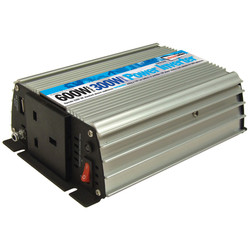Hi tech minded people.
I am converting a lwb boxer minibus into a motorhome and am considering using my ebike battery for the leisure battery. Tell me if you've done it/how you'd do it/if I'm crazy.
It is primarily for running a 12v compressor fridge, which I am yet to buy, but will consume an average of ~1A @12v... So 24aH in motorhome speak or 288Wh in pedelec. I plan to install a rigid rooftop solar panel to provide for this consumption and some extra capacity for 3 season camping.
I spent some time reading about vehicle leisure batteries and then thought, hang on I've got a really good li-ion on my e bike, can I use that?
My bike is a trek 7.3fx with a woosh aikema rear hub kit and has a 17.5Ah 36v battery. By my calculations this is 630Wh, sufficient to power my fridge for a couple of days.
The issues I see are...
1, voltage -36v battery and fridge demanding 12 or 24. I can see DC-DC "buck" converters on eBay which claim 95% efficiency for converting to 12/24v from higher. These only provide 240 to 480w which might be a problem providing the high amps for starting the compressor, so I might need a power capacitor on the 12v side 
2, charging... Decent Solar chargers are made for charging li-ion batteries, so shouldn't be a problem. Perhaps a second solar charger regulator for charging from the alternator is better than using a 240v inveter and supplied charger block.
Any thoughts appreciated...
I am converting a lwb boxer minibus into a motorhome and am considering using my ebike battery for the leisure battery. Tell me if you've done it/how you'd do it/if I'm crazy.
It is primarily for running a 12v compressor fridge, which I am yet to buy, but will consume an average of ~1A @12v... So 24aH in motorhome speak or 288Wh in pedelec. I plan to install a rigid rooftop solar panel to provide for this consumption and some extra capacity for 3 season camping.
I spent some time reading about vehicle leisure batteries and then thought, hang on I've got a really good li-ion on my e bike, can I use that?
My bike is a trek 7.3fx with a woosh aikema rear hub kit and has a 17.5Ah 36v battery. By my calculations this is 630Wh, sufficient to power my fridge for a couple of days.
The issues I see are...
1, voltage -36v battery and fridge demanding 12 or 24. I can see DC-DC "buck" converters on eBay which claim 95% efficiency for converting to 12/24v from higher. These only provide 240 to 480w which might be a problem providing the high amps for starting the compressor, so I might need a power capacitor on the 12v side

2, charging... Decent Solar chargers are made for charging li-ion batteries, so shouldn't be a problem. Perhaps a second solar charger regulator for charging from the alternator is better than using a 240v inveter and supplied charger block.
Any thoughts appreciated...



